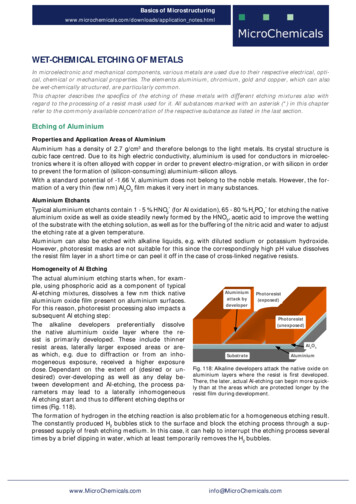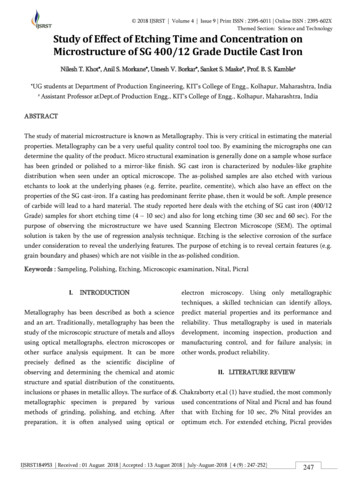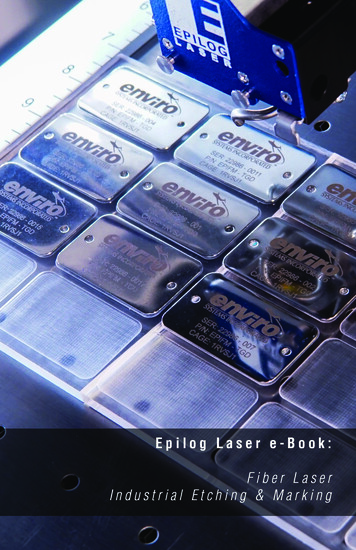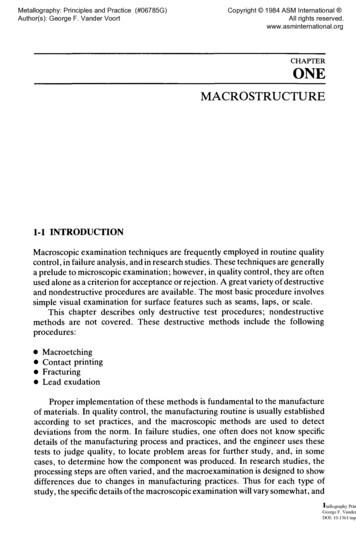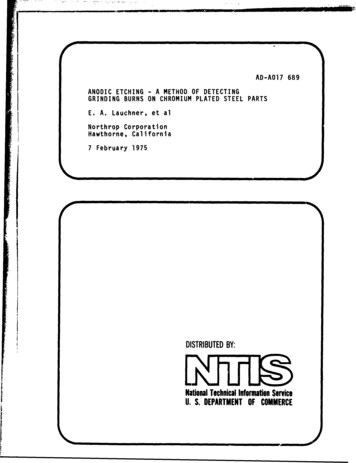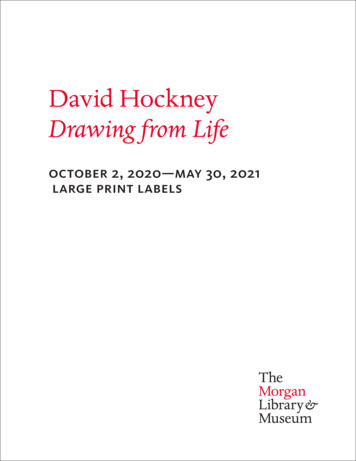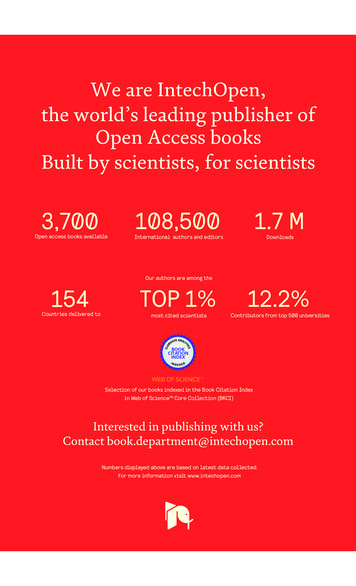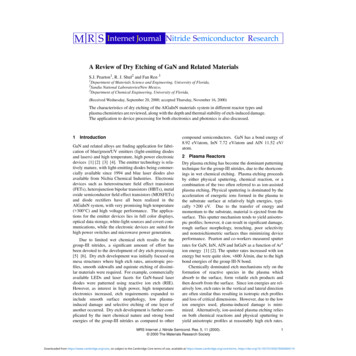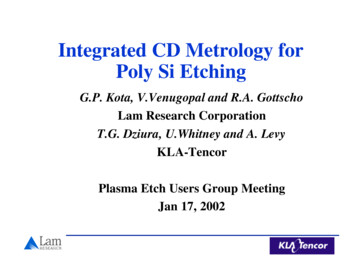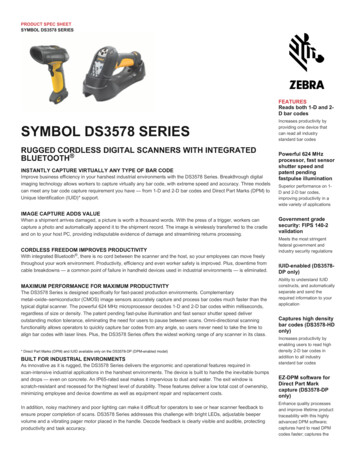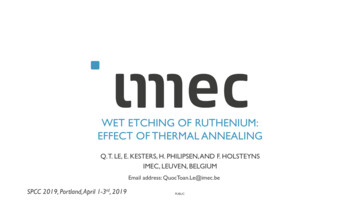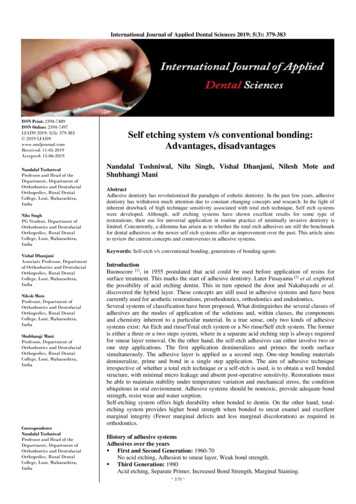
Transcription
International Journal of Applied Dental Sciences 2019; 5(3): 379-383ISSN Print: 2394-7489ISSN Online: 2394-7497IJADS 2019; 5(3): 379-383 2019 IJADSwww.oraljournal.comReceived: 11-05-2019Accepted: 15-06-2019Nandalal ToshniwalProfessor and Head of theDepartment, Department ofOrthodontics and DentofacialOrthopedics, Rural DentalCollege, Loni, Maharashtra,IndiaNilu SinghPG Student, Department ofOrthodontics and DentofacialOrthopedics, Rural DentalCollege, Loni, Maharashtra,IndiaVishal DhanjaniAssociate Professor, Departmentof Orthodontics and DentofacialOrthopedics, Rural DentalCollege, Loni, Maharashtra,IndiaNilesh MoteProfessor, Department ofOrthodontics and DentofacialOrthopedics, Rural DentalCollege, Loni, Maharashtra,IndiaShubhangi ManiProfessor, Department ofOrthodontics and DentofacialOrthopedics, Rural DentalCollege, Loni, Maharashtra,IndiaCorrespondenceNandalal ToshniwalProfessor and Head of theDepartment, Department ofOrthodontics and DentofacialOrthopedics, Rural DentalCollege, Loni, Maharashtra,IndiaSelf etching system v/s conventional bonding:Advantages, disadvantagesNandalal Toshniwal, Nilu Singh, Vishal Dhanjani, Nilesh Mote andShubhangi ManiAbstractAdhesive dentistry has revolutionized the paradigm of esthetic dentistry. In the past few years, adhesivedentistry has withdrawn much attention due to constant changing concepts and research. In the light ofinherent drawback of high technique sensitivity associated with total etch technique, Self etch systemswere developed. Although, self etching systems have shown excellent results for some type ofrestorations, their use for universal application in routine practice of minimally invasive dentistry islimited. Concurrently, a dilemma has arisen as to whether the total etch adhesives are still the benchmarkfor dental adhesives or the newer self etch systems offer an improvement over the past. This article aimsto review the current concepts and controversies in adhesive systems.Keywords: Self-etch v/s conventional bonding, generations of bonding agentsIntroductionBuonocore [1], in 1955 postulated that acid could be used before application of resins forsurface treatment. This marks the start of adhesive dentistry. Later Fusayama [2] et al. exploredthe possibility of acid etching dentin. This in turn opened the door and Nakabayashi et al.discovered the hybrid layer. These concepts are still used in adhesive systems and have beencurrently used for aesthetic restorations, prosthodontics, orthodontics and endodontics.Several systems of classification have been proposed. What distinguishes the several classes ofadhesives are the modes of application of the solutions and, within classes, the componentsand chemistry inherent to a particular material. In a true sense, only two kinds of adhesivesystems exist: An Etch and rinse/Total etch system or a No rinse/Self etch system. The formeris either a three or a two steps system, where in a separate acid etching step is always requiredfor smear layer removal. On the other hand, the self-etch adhesives can either involve two orone step applications. The first application demineralizes and primes the tooth surfacesimultaneously. The adhesive layer is applied as a second step. One-step bonding materialsdemineralize, prime and bond in a single step application. The aim of adhesive techniqueirrespective of whether a total etch technique or a self-etch is used, is to obtain a well bondedstructure, with minimal micro leakage and absent post-operative sensitivity. Restorations mustbe able to maintain stability under temperature variation and mechanical stress, the conditionubiquitous in oral environment. Adhesive systems should be nontoxic, provide adequate bondstrength, resist wear and water sorption.Self-etching system offers high durability when bonded to dentin. On the other hand, totaletching system provides higher bond strength when bonded to uncut enamel and excellentmarginal integrity (Fewer marginal defects and less marginal discoloration) as required inorthodontics.History of adhesive systemsAdhesives over the years First and Second Generation: 1960-70No acid etching, Adhesion to smear layer, Weak bond strength. Third Generation: 1980Acid etching, Separate Primer, Increased Bond Strength, Marginal Staining. 379
International Journal of Applied Dental Sciences http://www.oraljournal.comFourth Generation: 1990Hybrid layer of dentin & collagen, Dentin seal, Wetbonding concept.Fifth Generation: mid 1990Combined primer & adhesive, High bond strength, Unitdose packaging.Sixth Generation: 2000Self etching primers, Reduced post-operative sensitivity,Bond strengths lower than fourth & fifth generations.Seventh Generation: 2002All in one, Good bond strength & marginal sealing.The concept of self-etching approach was createdapproximately 20-30 years ago. Though the first and secondgenerations of bonding agents can be considered self-etchmaterials because no acid etching/rinsing or conditioning stepwere used.The basic composition of self-etch primers and self-etchadhesive system is an aqueous solution of acidic functionalmonomers, with a pH relatively higher than that of phosphoricacid etchants. The role of water is to provide the medium forionization and action of these acidic resin monomers. Becauseself-etch adhesive systems do not require a separate acidconditioning step and moist post-rinse control, they areconsidered simplified adhesive materials. They offer someadvantages over conventional etch-and rinse systems, such asreduction of postoperative sensitivity and less techniquesensitive. Another advantage is that infiltration of adhesiveresin tends to occur simultaneously with the self-etch process.The demand for reduced technique sensitivity, shorter clinicalapplication time and less incidence of post-operativesensitivity have made self-etch adhesive systems a promisingapproach when compared to the etch-and-rinse systems [3-11].The current self-etch adhesive systems are classified based onthe number of clinical application steps: one step or two-stepadhesives [5]. Two-step self-etch adhesive systems include theuse of a hydrophilic etching primer, which combines acidicmonomers that simultaneously etch and prime tooth substrate[12, 13], and after solvent evaporation, a layer of hydrophobicand bonding agent seals the dentin [8].One-step self-etch adhesive systems are all-in-one adhesives,which combine the etching, priming and bonding [14] thuscontaining acidic functional monomers, hydrophilic andhydrophobic monomers, water and organic solvents into asingle solution [15].The bonding mechanism of self-etch adhesive systems hasbeen intensely investigated and two-fold bondingmechanisms; micro-mechanical interlocking and chemicalbonding were described, which seems to be advantageous interms of restoration durability. The micro-mechanicalbonding contributes to provide strength against mechanicalstress, while the chemical interaction reduces hydrolyticdegradation, keeping the marginal sealing of restorations for alonger period [4, 5, 14, 16]. The functional acidic monomers areable to chemically interact with hydroxyapatite and arecomposed by specific carboxylic, phosphonic or phosphategroups.Total etch vs. self etch: Evidence based dentistryBonding to enamelBond strength is the measure of load bearing capacity of theadhesive. It has been suggested bond strengths of 17 MPa to20 MPa are required to resist contraction forces sufficiently toattain gap-free margins of resin composite restorations. Aminimum bond strength of 8 to10 MPa is reported to beadequate for most clinical orthodontic needs.The enamel bond strengths of earliest self-etch adhesiveswere lower than etch and rinse adhesives. Nevertheless,roughening of enamel to remove prismless enamel improvesthe enamel bonding ability of self-etch adhesives. A separate‘phosphoric acid enamel etching’ step improves bonding ofself-etch adhesives to enamel. Two step self-etch adhesivesbond at an acceptable level to ground enamel in vitro but notas well to the intact enamel.Classification by generationThe concept to classify by generation was used because of thecomplexity of bonding agents, the variety of classificationsrefers to what order type of adhesive was developed by thedental industry. Adhesive dentistry began in 1955 byBuonocore on the benefits of acid-etching. With changingtechnologies, dental adhesives have evolved from no-etch tototal-etch (4th and 5th generation) to self-etch (6th, 7th and 8thgeneration) systems [17]. Each generation has attempted toreduce the number of bottles involved in the process, tominimize the number of procedural steps, to provide fasterapplication techniques and to offer improved chemistry tofacilitate stronger bonding.First generationThe first-generation bonding systems were published byBuonocore in 1956 [18]. These bonding agents were designedfor ionic bonding to hydroxyapatite or for covalent bonding(hydrogen bonding) to collagen. However, immersion inwater would greatly reduce this bond. After nine years,Bowen used a coupling agent to overcome this problem [19].He addressed this issue using that acted as NPG-GMA aprimer or adhesion promoter between enamel/dentin and resinmaterials by chelating with surface calcium, where one endwould bond to dentin, and other would polymerize withcomposite resin [19]. Overall, this generation leads to very poorclinical results as well as low bond strength in the 1-3 MParange [20].Second generationThe second generation of dentin bonding agents wereintroduced in the late 1970s, and sought to improve thecoupling agents that were utilized in the first generation ofadhesives. The 2nd generation of dentin adhesives primarilyused polymerizable phosphates added to bis-GMA resins topromote bonding to the calcium in mineralized tooth structure[20, 21].Bonding mechanism involves formation of ionic bondbetween calcium and chlorophosphate groups. This ionicbond would rapidly degrade in water submersion (againanalogous to saliva) and even the water within the dentinitself, and cause debonding and/or microleakage [20]. Thesmear layer was still not removed, and this contributed to therelatively weak and unreliable bond strengths of this secondgeneration [20]. The smear layer is really a smooth layer ofinorganic debris that remains on the prepared dentin surfaceas a result of tooth preparation with rotary instruments (thedrill). This generation of bonding agents is no longer used,due mainly to failed attempts to bond with a loosely bondsmear layer. Bond strength: 4-6 Mpa [22].Third generationIn the late 1970s and early 1980s, third generation dentinbonding agents were presented. The third-generation bondingsystems introduced a very important change: the acid etching 380
International Journal of Applied Dental Scienceshttp://www.oraljournal.comof the dentin in an effort to modify or partially remove thesmear layer [20]. This opened the dentin tubules and allowed aprimer to be placed after the acid was completely rinsedaway. While this method achieved a greater bond, it wasconsidered controversial in dentistry as the feeling existed thatdentin ought not to be etched. After the primer was added, anunfilled resin was placed on both dentin and enamel. Theweak link with this generation was the unfilled resins thatsimply did not penetrate the smear layer effectively accordingto Tao et al. in 1988 [23].Fourth generationIn 1980s and 1990s, fourth generation dentin bonding agentswere introduced. The fourth-generation materials were thefirst to achieve complete removal of smear layer [20] and stillconsidered as the golden, standard in dentin bonding. In thisgeneration, the three primary components (etchant, primerand bonding) are typically packaged in separate containersand applied sequentially. The concept of total-etch techniqueand moist dentinal hallmarks of the 4th generation systems [20,24]where dentin and enamel are etched at the same time withphosphoric acid (H3PO3) for a period of 15-20 s [25].However, the surface must be left moist “wet bonding”, inorder to avoid collagen collapse. The application of ahydrophilic primer solution can infiltrate the exposed collagennetwork forming the hybrid layer [20, 26]. The hybrid layer isformed by the resin infiltrated surface layer on dentin andenamel. The goal of ideal hybridization is to give high bondstrengths and a dentin seal [27]. Bond strengths for theseadhesives were in the low- to mid-20 MPa range andsignificantly reduced margin leakage compared to earliersystems [1]. This system was very technique sensitive andrequired an exacting technique of controlled etching with acidon enamel and dentin, followed by two or more componentson both enamel and dentin. These systems are very effectivewhen used correctly, have good long-term clinical trackrecord, and are the most versatile of all the adhesivecategories, because they can be used for virtually any bondingprotocol (direct, indirect, self-cure, dual-cure or lightcure).These systems are still the standards by which the newersystems are judged. However, these systems can be veryconfusing and time consuming with so many bottles andapplication steps. Because of the complexity of multiplebottles and steps, dentists began requesting a simplifiedadhesive system.Fifth generationIn the 1990s and in the ongoing decade, the fifth-generationbonding systems sought to simplified the process of fourthgeneration adhesion by reducing the clinical steps whichresults in reduced working time. These are distinguished bybeing “one step” or “one bottle” system. In addition, animproved way was needed to prevent collagen collapse ofdemineralized dentin and to minimize if not totally eliminate,postoperative sensitivity [14, 20, 28]. So, the most commonmethod of simplification is “one bottle system” combined theprimer and adhesive into one solution to be applied on enameland dentin simultaneously with 35 to 37% phosphoric acid for15-20s. This single bottle, etch-and-rinse adhesive type showsthe same mechanical interlocking with etched dentin occursby means of resin tags, adhesive lateral branches and hybridlayer formation and shows high bond strength values to dentinwith marginal seal in enamel [26]. These kinds of adhesivessystems may be more susceptible to water degradation overtime than the fourth generation. This is because thepolymerized primer of the “one bottle system” tends to behydrophilic in nature. However, when using the fourthgeneration, the hydrophilic primer is covered by a morehydrophobic resin, making it less susceptible to watersorption. Not all 5th generation adhesives are compatible withdual and self-cured or core materials. The lower PH of theOxygen-inhibited layer, or the monomers in some simplifiedproducts, are too acidic and thereby de-activate the tertiaryamine in chemical-cured composites. As well as the same inregards to the number of applications (unfilled need moreapplications), so it is critical to follow the manufacturer’sdirections. Several long-term studies indicate that 5thgeneration dental adhesive achieve high clinical bondstrengths. In addition, the resin-dentin bond is prone to waterdegradation, 5th generation adhesives are more prone to waterdegradation than 4th generation dental adhesive.Representative dentin bond strength is 3 to 25 MPa.Sixth generationThe sixth generation bonding systems introduced in the latterpart of the 1990s and the early 2000s also known as the “selfetching primers”, were a dramatic leap forward in technology.The sixth generation bonding systems sought to eliminate theetching step, or to include it chemically in one of the othersteps: (self-etching primer adhesive) acidic primer appliedto tooth first, followed by adhesive or (self-etching adhesive)two bottles or unit dose containing acidic primer andadhesive; a drop of each liquid is mixed and applied to thetooth. It is recommended that the components are mixedtogether immediately before use. The mixture of hydrophilicand hydrophobic resin components is then applied to the toothsubstrate [29]. Evidently, these bonding systems arecharacterized by the possibility of achieving a proper bond toenamel and dentin using only one solution [20]. The biggestadvantage of the sixth generation is that their efficacy appearsto be less dependent on the hydration state of the dentin thanthe total-etch systems [26]. Unfortunately, the first evaluationsof these new systems showed a sufficient bond to conditioneddentin while the bond with enamel was less effective. Thismay be due to the fact that the sixth generation systems arecomposed of an acidic solution that cannot be kept in place,must be refreshed continuously and have a pH that is notenough to properly etch enamel [30]. In order to overcome thisproblem, it is recommended to etch enamel first with thetraditional phosphoric acid prior to using it. However, thoseutilizing this technique should take care to confine thephosphoric acid solely to the enamel. Additional etching ofthe dentin with phosphoric acid could create an “over-etch”situation where the demineralization zone is too deep forsubsequently placed primers to completely penetrate [26].While data indicates that 6th generation adhesives will adherewell to dentin (41 MPa at 24 hours), the bond to enamel is atleast 25% weak to enamel then both the 4th and 5thgeneration adhesives in pooled data studies. Several respectedclinicians have utilized 6th generation adhesives for bondingto dentin after selectively etching the enamel.Seventh generationThe seventh-generation bonding systems was introduced inlate 1999 and early 2005. The seventh generation or onebottle self-etching system represents the latest simplificationof adhesive systems. With these systems, all the ingredientsrequired for bonding are placed in and delivered from a singlebottle [26, 31]. This greatly simplifies the bonding protocol asthe claim was that could be achieved consistent bond 381
International Journal of Applied Dental Scienceshttp://www.oraljournal.comstrengths while completely eliminating the errors that couldnormally be introduced by the dentist or dental assistant whohad to mix the separate components with other morecomplicated systems. However, incorporating and placing allof the chemistry required for a viable adhesive system into asingle bottle, and having it remain stable over a reasonableperiod of time, poses a significant challenge [26]. Theseinherently acidic systems tend to have a significant amount ofwater in their formulations and may be prone to hydrolysisand chemical breakdown [31, 32]. Furthermore, once placed andpolymerized, they are generally more hydrophilic than twostep self-etching systems; this condition makes them moreprone to water sorption, limits the depth of resin infiltrationinto the tooth and creates some voids [33]. The advantage ofthis generation was not any mixing required and the bondstrengths were consistent. However, the seventh-generationadhesives have proven to have the lowest initial and longterm bond strengths of any adhesive on the market today thatmay be considers as disadvantage. Seventh generationadhesives involve the application of etch, primer, andadhesive which have already been mixed, followed by lightcuring the tooth.Seventh generation adhesives are “all-in-one” [34] if there hasever been such a thing. The clinical and scientific data onthese adhesives proves that they are hydrophilic and degrademore rapidly. In addition, the chemistry must be acidic, asetch is involved in this liquid, and this has been shown toadversely react with the composite initiator systems.Eighth generationIn 2010, voco America introduced voco Futura bond DC as8th generation bonding agent, which contains nanosizedfillers [35]. In the new agents, the addition of nano-fillers withan average particle size of 12 nm increases the penetration ofresin monomers and the hybrid layer thickness, which in turnimproves the mechanical properties of the bonding systems [36,37]. Nano-bonding agents are solutions of nano-fillersTable 1: Advantages and disadvantages of self-etching and total-etching systemsSelf-etching systemTotal-etching system Simple procedures Reduced post-operative sensitivity 38,39 High High bond strength to uncut enamel 41Advantages bond durability to dentin 40 Less technique sensitivity (wet bonding Excellent marginal integrity 42,43,44,45,46is not required) Esthetic (thin bonding layer)Low bond strength to uncut enamel 41 - Poor marginalComplicated procedures - Higher risk of post-operativeDisadvantagesintegrity42,43,44,45,46 (marginal defect and discoloration)Sensitivity38,39 - Low bond durability to dentin 40Table 2: Classification of dental bonding systems by mber of steps22332111Surface pre-treatmentEnamel etchEnamel etchDentine conditioningEtch and rinseEtch and rinseSelf-etch adhesiveSelf-etch adhesiveSelf-etch adhesiveReferences1. Buonocore MG. A simple method of increasing theadhesion of acrylic filling materials to enamel surfaces.Dent Res. 1955; 34:849-53.2. Fusayama T, Nakamura M, Kurosaki N, Iwaku M. Nonpressure adhesion of a new adhesive restorative resin. JDent Res. 1979; 58(4):1364-1370.3. Van Meerbeek B, De Munck J, Yoshida Y, Inoue S,Vargas M, Vijay P et al. Adhesion to enamel and dentin:currents status and future challenges. Oper Dent. 2003;28:215-235.4. Reis AF, Giannini M, Pereira PN. Long-term TEManalysis of the nanoleakage patterns in resin-dentininterfaces produced by different bonding strategies. DentMate. 2007; 23:1164-1172.5. Van Meerbeek B, Yoshihara K, Yoshida Y, Mine A, DeMunck J, Van Landuyt KL. State of the art of self-etchadhesives. Dent Mater. 2011; 27:17-28.6. Tay FR, Pashley DH. Aggressiveness of contemporaryself-etching systems. I: Depth of penetration beyonddentin smear layers. Dent Mater. 2001; 17:296-308.7. Tay FR, Pashley DH, Suh BI, Carvalho RM, ItthagarunA. Single-step adhesives are permeable membranes. JDent. 2002; 30:371-382.8. Tay F, Pashley DH. Have dentin adhesives become toohydrophilic? J Can Dent Assoc. 2003; .16. 382 Shear bond strength (MPa)2512-1525252025Over 30Yiu CK, King NM, Pashley DH, Suh BI, Carvalho RM,Carrilho MR et al. Effect of resin hydrophilicity andwater storage on resin strength. Biomaterials. 2004;25:5789-5796.Cantanhede de Sa RB, Oliveira Carvalho A, PuppinRontani RM, Ambrosano GM, Nikaido T, Tagami J et al.Effects of water storage on bond strength and dentinsealing ability promoted by adhesive systems. J AdhesDent. 2012; 14:543-549.Perdigao J, Geraldeli S, Hodges JS. Total-etch versusself-etch adhesive: Effect on postoperative sensitivity. JAm Dent Assoc. 2003; 134:1621-1629.Chigira H, Yukitani W, Hasegawa T, Manabe A, Itoh K,Hayakawa T et al. Self-etching dentin primers containingPhenyl-P. J Dent Res. 1994; 73:1088-1095.Watanabe I, Nakabayashi N, Pashley DH. Bonding toground dentin by a phenyl-P self-etching primer. J DentRes. 1994; 73:1212-1220.De Munck J, Van Landuyt K, Peumans M, Poitevin A,Lambrechts P, Braem M et al. A critical review of thedurability of adhesion to tooth, tissue: methods andresults. J Dent Res. 2005; 84:118-132.Wang Y, Spencer P. Physiochemical interactions at theinterfaces between self-etch adhesive systems anddentine. J Dent. 2004; 32:118-132.Perdigao J, Lopes MM, Gomes G. In vitro bonding
International Journal of Applied Dental mance of self-etch adhesives: II-ultramorphologicalevaluation. Oper Dent. 2008; 33:534-549.Joseph P, Yadav C, Satheesh K, Rahna R. Comparativeevaluation of the bonding efficacy of sixth, seventh andeight generation bonding agents: An in vitro study. IntRes J Pharm. 2013; 4(9):143-147.Buonocore M, Wileman W, Brudevold F. A report on arisen composition capable of bonding to human dentinsurfaces. J Dent Res. 1956; 35:846-851.Bowen RL. Adhesive bonding of various materials tohard tooth tissues II. Bonding to dentin promoted by asurfaceactive comonomer. J Dent Res. 1965; 44:895-890.Kugel G, Ferrari M. The science of bonding: from first tosixth generation. JADA. 2000; 13:20-25.American Dental Association Council on DentalMaterials. Instruments and equipment. Dentinbondingsystems: an update. JADA. 1987; 114:91-95.Broome JC, Duke ES, Norling BK. Shear bond strengthsof composite resins with three different adhesives[Abstract]. J Dent Res. 1985; 64:244.Tao L, Pashley DH, Boyd L. The effect of different typesof smear layers on dentin and enamel bond strengths.Dent Mater. 1988; 4:208-216.Kanca J. A method for bonding to tooth structure usingphosphoric acid as a dentin-enamel conditioner.Quintessence Int. 1991; 22:285-290.Tay FR, Gwinnett AJ, Wei SHY. Structural evidence of asealed tissue interface with Total etch wet bondingtechnique, in vivo. J Dent Res. 1994; 73:629-636.Alex G. Adhesive considerations in the placement ofdirect composite restorations. Compend. 2008; 1(1):2025.Nakabayashi N, Kojima K, Masuhara E. The promotionof adhesion by the infiltration of monomers into toothsubstrates. J Biomed Mater Res. 1982; 16(3):265-273.Leinfelder KF. Dentin adhesives for the twenty-firstcentury. Dent Clin North Am. 2001; 45(1):1-6.Pashly EL, Agee K, Pashly DH, Tay F. Effect of oneversus two applications of an unfilled, all-in-one adhesiveon dentine bonding. J Dent. 2002; 30:83-90.Fabianelli A, Vichi A, Kugel G, Ferrari M. Influence ofselfetching-priming bonding systems on sealing ability ofClass II restorations: leakage and SEM evaluations. Paperpresented at annual meeting of the InternationalAssociation for Dental Research. Washington, D.C. April6, 2000.Mozner N, Salz U, Zimmermann J. Chemical aspects ofselfetching enamel-dentin adhesives: a systematic review.Dent Mater. 2005; 21:895-910.Nishiyama N, Tay FR, Fujita K. Hydrolysis of functionalmonomers in single-bottle self-etching primer-correlationof 13C NMR and TEM findings. J Dent Res. 2006;85:422-426.Tay FR, Pashly DH. Have dentin adhesives become toohydrophilic. Can Dent Assoc. 2003; 69:726-731.Yaseen SM, Subba Reddy VV. Comparative evaluationof shear bond strength of two self-etching adhesive (sixthand seventh generation) on dentin of primary andpermanent teeth: An in vitro study. J Indian Soc PedodPrev Dent. 2009; 27(1):33-38.Pashley DH, Tay FR. Aggressiveness of contemporaryselfetching adhesives. Part II: Etching effects on ungroudenamel. Dent Master. 2001; 17(5):430-444.Başaran G, Ozer T, Devecioğlu Kama J. Comparison of arecently developed nanofiller self-etching primer37.38.39.40.41.42.43.44.45.46.47. 383 adhesive with other self-etching primers andconventional acid etching. Eur J Orthod. 2009;31(3):271-275.Kasraei SH, Atai M, Khamverdi Z, Khalegh Nejad S.Effect of nanofiller addition to an experimental dentinadhesive on microtensile bond strength to human dentin.J Dent (Tehran). 2009; 6(2):91-96.Unemori M, Matsuya Y, Akashi A, Goto Y, Akamine A.Self-etching adhesives and postoperative sensitivity. AmJ Dent. 2004; 17(3):191-5.Swift EJ Jr. Dentin/enamel adhesives: review of theliterature. Pediatr Dent. 2002; 24(5):456-61.Hashimoto M. In vivo Degradation of Resin-DentinBonds in Humans over 1 to 3 years. J Dent Res. 2000;79(6):1385-1391.Beloica M, Goracci C, Carvalho CA, Radovic I,Margvelashvili M, Vulicevic ZR et al. Microtensile vsmicroshear bond strength of all-in-one adhesives tounground enamel. J Adhes Dent. 2010; 12(6):427-33.DOI: 10.3290/j.jad.a18237.Peumans M, De Munck J, Van Landuyt KL, Poitevin A,Lambrechts P, Van Meerbeek B. Eight-year clinicalevaluation of a 2-step self-etch adhesive with and withoutselective enamel etching. Dent Mater. 2010;26(12):1176-84. Epub 2010 Oct 13.Blunck U, Zaslansky P. Enamel margin integrity of ClassI one-bottle all-in-one adhesives-based restorations. 5.Fron H, Vergnes JN, Moussally C, Cazier S, Simon AL,Chieze JB et al. Effectiveness of a new one-step self-etchadhesive in the restoration of non-carious cervicallesions: 2-year results of a randomized controlledpractice-based study. Dent Mater. 2011; 27(3):304-12.Epub 2010 Nov 30.Van Meerbeek B, Kanumilli P, De Munck J, VanLanduyt K, Lambrechts P, Peumans M. A randomizedcontrolled study evaluating the effectiveness of a twostep self-etch adhesive with and without selectivephosphoric-acid etching of enamel. Dent Mater. 2005;21(4):375-83.Frankenberger R, Lohbauer U, Roggendorf MJ,Naumann M, Taschner M. Selective enamel etchingreconsidered: better than etch-and-rinse and self-etch? JAdhes Dent. 2008; 10(5):339-44.Classification review of dental adhesive systems: fromthe IV generation to the universal type Annali diStomatologia. 2017; 8(1):1-17.
bonding were described, which seems to be advantageous in terms of restoration durability. The micro-mechanical bonding contributes to provide strength against mechanical stress, while the chemical interaction reduces hydrolytic degradation, keeping the marginal sealing of restorations for a longer period [4, 5, 14, 16]. The functional acidic .
